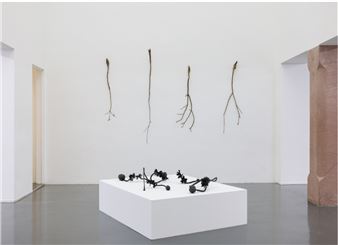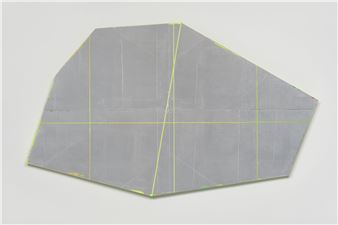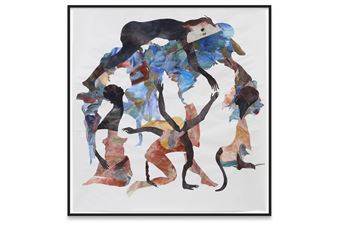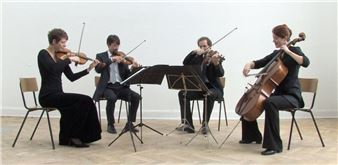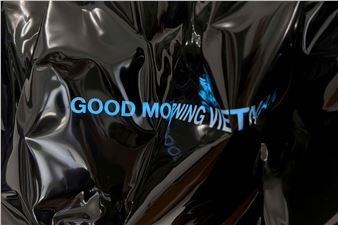Spectral-White. The Appearance of Colonial-Era Europeans
How were Europeans depicted in the art of the colonized? In his book The Savage Hits Back or the White Men through Native Eyes (1937), Cologne museum director and ethnologist Julius Lips (1895–1950) compiled portrayals that show the Europeans as “exotics” and barbaric foreigners. In these objects Lips, who was driven into exile by the Nazis, discovered a subversive critique of the “colonial masters.” Given the current debates over colonial-era collections, Lips’ anticolonial and antifascist polemics seem highly up-to-the-minute.
Since researchers did not consider the hybrid works of art authentic for a long time, an exhibition planned by Lips was never realized even after the Nazi era until parts of his collection were exhibited for the first time in the Rautenstrauch-Joest-Museum (RJM) in Cologne in 2018. The depictions of European soldiers, colonial officials, missionaries and merchants, European kings as well as indigenous people in European clothing reveal a transcultural history of the interconnectedness of colonial-era art.
The exhibition at Haus der Kulturen der Welt adopts Lips’ change of perspective and asks about the consequences of this first “inversive ethnology”. The exhibited objects and photographs address early contact stories, the entry of European commodities in local myths and rituals, the history of trade relations, mission and colonial wars. The representations of Europeans were also produced specifically for the Western market as souvenirs in a commercialized form of early “tourist art.” They not only testify to resistance, but also to cooperation, innovation and media circulation.
While the provenance of Lips’ objects remains as obscure as the names of the indigenous artists, the biographies of the newly rediscovered artists Tommy McRae and Thomas Onajeje Odulate can be reconstructed. The exhibition offers an overview of their work and their biographies and shows their relevance as contemporaries of European Modernism. Their innovative imagery undermines the dichotomies of primitive and modern and thus puts the aesthetics and narratives of ethnology and art criticism and the solidification of a canon of “primitive art” since 1900 up for renegotiation.
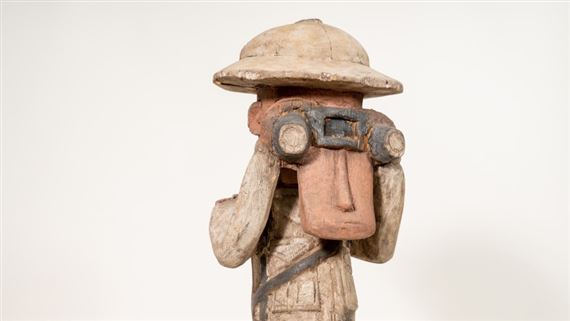
Recommended for you
How were Europeans depicted in the art of the colonized? In his book The Savage Hits Back or the White Men through Native Eyes (1937), Cologne museum director and ethnologist Julius Lips (1895–1950) compiled portrayals that show the Europeans as “exotics” and barbaric foreigners. In these objects Lips, who was driven into exile by the Nazis, discovered a subversive critique of the “colonial masters.” Given the current debates over colonial-era collections, Lips’ anticolonial and antifascist polemics seem highly up-to-the-minute.
Since researchers did not consider the hybrid works of art authentic for a long time, an exhibition planned by Lips was never realized even after the Nazi era until parts of his collection were exhibited for the first time in the Rautenstrauch-Joest-Museum (RJM) in Cologne in 2018. The depictions of European soldiers, colonial officials, missionaries and merchants, European kings as well as indigenous people in European clothing reveal a transcultural history of the interconnectedness of colonial-era art.
The exhibition at Haus der Kulturen der Welt adopts Lips’ change of perspective and asks about the consequences of this first “inversive ethnology”. The exhibited objects and photographs address early contact stories, the entry of European commodities in local myths and rituals, the history of trade relations, mission and colonial wars. The representations of Europeans were also produced specifically for the Western market as souvenirs in a commercialized form of early “tourist art.” They not only testify to resistance, but also to cooperation, innovation and media circulation.
While the provenance of Lips’ objects remains as obscure as the names of the indigenous artists, the biographies of the newly rediscovered artists Tommy McRae and Thomas Onajeje Odulate can be reconstructed. The exhibition offers an overview of their work and their biographies and shows their relevance as contemporaries of European Modernism. Their innovative imagery undermines the dichotomies of primitive and modern and thus puts the aesthetics and narratives of ethnology and art criticism and the solidification of a canon of “primitive art” since 1900 up for renegotiation.

 ARTISTS
ARTISTS







